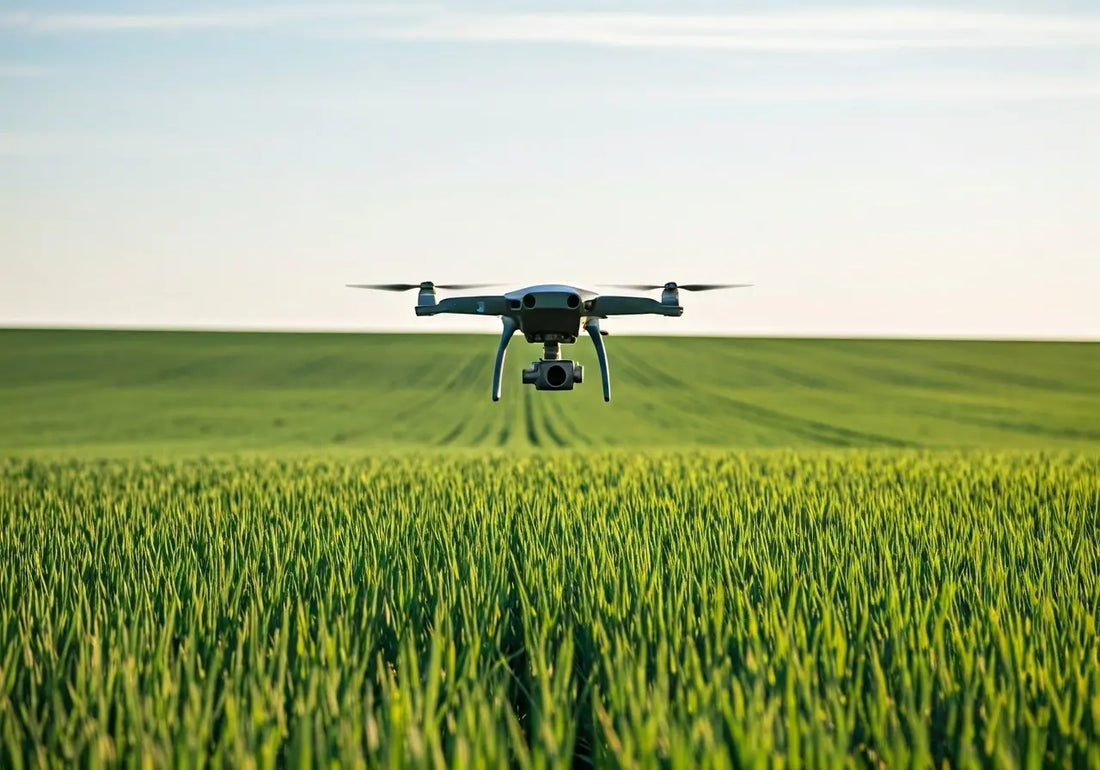
What are the Benefits of Using Drones for Crop Analysis?
Share
As agriculture continues to embrace technology, drones have emerged as a game-changer for crop analysis. These flying gadgets offer farmers a new perspective, literally and figuratively, on how to understand and manage their crops better. Let’s dive into how drones enhance crop productivity and what benefits they bring to the agricultural table.
Enhancing Crop Monitoring
Drones provide real-time data on crop health, allowing farmers to detect issues such as disease or pests early. This ensures that corrective measures can be implemented swiftly, minimizing potential damage. Not only do they offer a bird’s-eye view of the land, but they also allow farmers to gather detailed and actionable data that would be impossible to collect from the ground. By leveraging drone technology, farmers can stay a step ahead, ensuring that they address problems before they escalate further, safeguarding their yield and the health of their crops.
The efficiency and precision of drones in monitoring extensive crop fields cannot be overstated. By flying over large tracts of land, they can quickly identify troublesome areas that might require attention. This proactive approach not only saves time but also prevents significant financial losses by promptly addressing conditions that could lead to crop damage. With technological integration, drones enhance traditional farming methods, making them a cornerstone in the quest for more efficient and productive agricultural management.
Improving Precision Agriculture
With advanced sensors and imaging technologies, drones facilitate precision agriculture. They help in mapping fields and analyzing soil variations, thus aiding in efficient resource allocation and reducing wastage. The integration of drones into agricultural practices empowers farmers to make more informed decisions by providing a comprehensive view of their land. This data-driven approach not only boosts the efficiency of farming operations but also optimizes the use of resources such as water and fertilizers. Consequently, farmers can achieve higher yields with fewer resources, promoting more sustainable farming practices.
Precision agriculture is all about making the right choices at the right time, and drones are pivotal in this process. By collecting and analyzing vast amounts of data, they enable farmers to tailor their strategies specifically to the needs of their crops. Whether adjusting irrigation schedules or altering planting patterns, drones make it feasible for farmers to customize their approach to suit different fields or even different sections within a single field. This adaptability in management practices ultimately leads to increased profitability and reduced environmental impact.
Reducing Costs and Labor
By automating the crop monitoring process, drones reduce the need for manual labor and frequent field visits. This results in significant cost savings, both in labor and in resource management. The convenience of drones allows farmers to spend less time physically walking through fields, thus freeing up their time for other important tasks. Furthermore, automation means less human error, ensuring that field inspections are consistent and reliable. In the long run, this automation translates into lower operating costs while simultaneously increasing productivity, a win-win situation for any agricultural operation.
Implementing drone technology in farming means a shift towards more sustainable and economically viable agricultural practices. By cutting down on the need for extensive labor, drones help in reallocating human resources to focus on more strategic activities that can further improve productivity. Additionally, with drones conducting quick and efficient surveillance and analysis, farmers can significantly cut down on operational delays and unnecessary expenses, making their farms more competitive in today’s fast-evolving agricultural landscape.
Increasing Data Accuracy
The high-resolution images and data collected by drones provide accurate information regarding crop conditions. This accuracy helps in better decision-making and planning for future crops. By delivering precise details on plant health and soil conditions, drones enable farmers to understand their fields better than ever before. In farming, where one mistake can lead to significant losses, having accurate data on hand is invaluable. These insights guide farmers to optimize inputs like fertilizers and pesticides, ensuring they are applied in the correct amounts and at the right times.
Beyond just accuracy, the real-time aspect of drone data collection means that farmers can respond more swiftly to ongoing changes in crop conditions. Instead of relying on outdated information, they can have a current snapshot of their fields, allowing for more dynamic and adaptable farming practices. This adaptability not only aids immediate decision-making but also establishes a robust framework for future planning, resulting in continuously optimized farming strategies.
Facilitating Spot Treatment
With detailed insights from drone data, farmers can administer treatments more precisely. This means addressing problems only where they exist, reducing the use of chemicals and enhancing sustainability. By using drones for pest and disease detection, farmers can swiftly identify affected areas and treat them without unnecessary blanket spraying, thus preserving the environment and reducing costs. This targeted approach allows for maintaining the balance within the ecosystem, protecting beneficial insects and microorganisms that play crucial roles in crop health.
Spot treatment facilitated by drones is a cornerstone of integrated pest management (IPM) strategies, which emphasize responsible and strategic pesticide use. By applying pesticides only where necessary, farmers ensure that they are doing their part in minimizing chemical exposure to the environment. This judicious approach not only enhances sustainability but also contributes to better crop quality—a crucial factor in meeting modern consumer expectations and regulatory standards while safeguarding the farm environment.
Embrace the Future of Farming with Drones
Drones are revolutionizing crop analysis, offering farmers unprecedented insight and efficiency. By adopting drone technology, farmers can make informed decisions, optimize resource use, and ultimately boost their production. As technology evolves, the role of drones in agriculture is only set to grow, making them an invaluable asset in modern farming practices.

